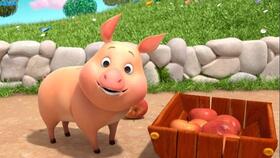Title: Introducing Insects in Early Childhood Education
Insects are fascinating creatures that captivate the imagination of young children. Early childhood education presents a wonderful opportunity to introduce them to the world of insects, fostering curiosity, understanding of nature, and appreciation for biodiversity. Here's a comprehensive guide on how to incorporate insect education into early learning programs.
1.
Insect Exploration Activities:
Bug Hunts:
Take children on outdoor bug hunts in safe environments like gardens or parks. Provide magnifying glasses and small containers for observation.
Insect Observation:
Set up an insect observation station in the classroom with live insects like ants, ladybugs, or caterpillars. Children can observe their behavior and life cycles.
Insect Art:
Encourage creativity by incorporating insects into art activities. Children can create insectthemed paintings, collages, or even make insect costumes.
2.
Insect Books and Stories:
Picture Books:
Utilize ageappropriate picture books about insects to introduce children to different species, their characteristics, and habitats.
Storytelling:
Share engaging stories about insects to spark children's imagination and curiosity. Incorporate moral lessons or scientific facts into the stories for educational purposes.
3.
Insect Science Experiments:
Butterfly Life Cycle:
Set up a butterfly garden or raise caterpillars in the classroom to observe the complete metamorphosis process, from caterpillar to butterfly.
Ant Farms:
Use ant farms to teach children about ant colonies, teamwork, and division of labor among insects. They can observe ants constructing tunnels and carrying food.
4.
Insectthemed Songs and Rhymes:
Insect Songs:
Sing catchy songs about insects to reinforce learning and make it fun. Incorporate movements or actions that mimic insect behavior.
Rhymes and Fingerplays:
Teach rhymes and fingerplays related to insects, such as "The Itsy Bitsy Spider" or "Five Little Ladybugs," to promote language development and memory retention.
5.
Outdoor Exploration:
Nature Walks:
Take children on nature walks to observe insects in their natural habitats. Encourage them to listen for insect sounds and look for signs of insect activity.
Gardening:
Involve children in gardening activities where they can observe insects pollinating flowers, decomposing organic matter, or feeding on plant leaves.
6.
Insectthemed Dramatic Play:
Bug Costume Dressup:
Provide costumes and props for children to dress up as their favorite insects. Encourage imaginative play where they act out the roles of insects in their natural environments.
Insect Puppet Shows:
Use insect puppets to create interactive storytelling experiences or roleplay scenarios that teach children about insect behavior and habitats.
7.
Insect Diversity and Conservation:
Insect Diversity:
Highlight the diversity of insects by showcasing different species from around the world. Discuss their unique features, adaptations, and ecological roles.
Conservation Awareness:
Raise awareness about the importance of insects in ecosystems and the threats they face, such as habitat loss and pollution. Encourage children to take simple actions to protect insect habitats, like planting native flowers or reducing pesticide use.

By incorporating these activities into early childhood education, educators can instill a lifelong love and appreciation for insects while promoting scientific inquiry, creativity, and environmental stewardship. Let's inspire the next generation of entomologists and nature enthusiasts from a young age!


